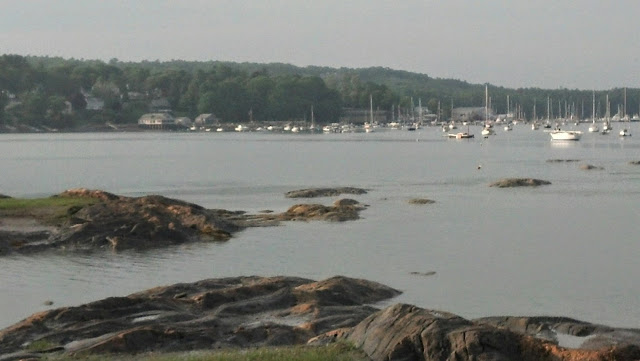Alexandria, Virginia
I’ve lost
track of the days and I left our trip log out in the motorhome, so I’m guessing
it’s Day 41. We’re now at Russell and
Carol’s house in Alexandria, enjoying an all-too-brief visit with them. Just to bring the blog up to date since my
last post, here’s a brief recap…
After
leaving Freeport, Maine, we spent the next night in the Berkshires of western
Massachusetts at a campground in Pittsfield.
It was a pleasant drive across southern New Hampshire and Vermont,
re-visiting the area we first visited a few years ago on our first long
motorhome adventure after our retirement.
That was in the fall when the colors were at their peak, so it was
interesting to see the same countryside in the verdant green of spring.
From
western Mass. we crossed over into New York and followed the Hudson River down
past West Point, then cut across a winding road to northwestern New Jersey, where we spent Thursday night at Swartswood State Park, near the town of Newton. The next day we drove south through the center of New
Jersey, mostly on Highway 206, avoiding the freeways and toll roads that most travelers
use to zip across this state without a second glance. The countryside was very pastoral, not at all
like the usual picture in our minds when we think of New Jersey. It was slow going, however, as the small
towns along back roads such as this are frequent, and as we drew nearer and
nearer to Trenton, the traffic increased dramatically. We took advantage of the six-line superslab
to get around Trenton, and were soon in the New Jersey Pinelands, heading
toward Cape May. Our second night in the
Garden State was spent at a campground in Belle Plains State Forest, near the
town of Woodbine.
The next
morning it was a short hop over to the southern Jersey shore, where we plodded
our way through the beach traffic for several miles. We stopped at Stone Harbor for a stroll on
the beach – a mile or so – to break up the morning’s drive, then proceeded to
the Cape May - Lewes ferry to the Delaware shoreline. This was the sixth ferry ride of our journey,
the others being 1 & 2 - Madeline Island in Wisconsin (two ways, there and
back), 3 &4 - Mackanac Island in Michigan (again two ways, there and back),
5 - Prince Edward Island to Nova Scotia, and finally 6 - Cape May to
Lewes. Our plan was to spend the night
at Cape Henlopen State Park just outside of Lewes, Delaware, but for the first
time on this long trip we were met by a “Campground Full” sign. The gentleman at the state park entrance gate
was kind enough to give us a sheet listing all the commercial campgrounds in
the area, so we ended up at one of these.
Commercial campgrounds, especially those near resort areas, and more
especially in this part of the country, are not our favorite places to stay
since they always turn out to be about 90 percent semi-permanent or “seasonal”
travel trailers and 5th wheels to 10 percent overnighters or
short-termers like us. That is not what
we’d consider the most pleasant atmosphere and the main reason we much prefer
state parks, national parks, Corps of Engineers campgrounds, and, when in
Canada, provincial parks. Needless to
say, we were up and out of there as quickly as possible this morning, making a
beeline for the 130 or so miles to Alexandria to spend a few hours with Russell
and Carol before moving on down the road tomorrow morning to spend a couple of days with my brother John
and sister-in-law Charlie in Columbia, South Carolina, our final stop before
heading home to Colorado.




